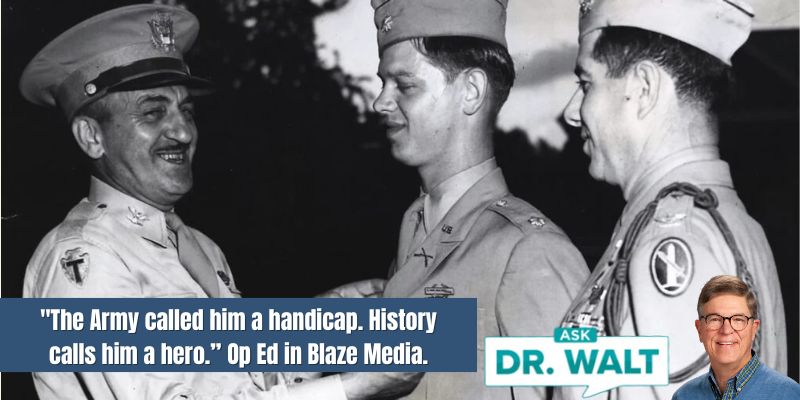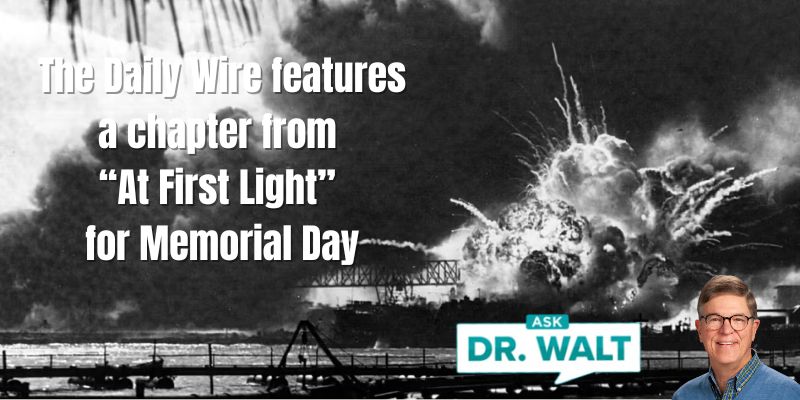
August 15, 1944 — The southern France D-Day (Part 1)
August 15, 2024
August 15, 1944 — The southern France D-Day (Part 3)
August 15, 2024As the men followed him down the rope ladders into other Higgins boats, Phil yelled to them, “Hold the verticals, or your hands will be stepped on!” He and one of his sergeants rapidly inspected the equipment to be sure everything was in order. Once the men were on board their craft, the coxswain gunned the boat away from the ship. They were on their way with a motto on their minds: “No more Anzios.”[1]

Despite the earlier bombardment, there was still incoming enemy mortar, artillery, and rocket fire that caused waterspouts. Small arms fire crackled overhead. Phil and his men couldn’t see the beach because the front and sides of the LCVP were too high.
The coxswain waited until 0850 hours, when a violet smoke signal informed them and the rest of the invasion force that the beach defenses had been neutralized. They could land, which they did beginning at 0920 hours.
Phil was startled when they hit the coastline because their LCVP ran right up on the beach, dropped its ramp, and deposited them on dry sand.
Phil was in the lead Jeep with his driver and radioman, and after their wheels hit the sandy beach, they drove quickly toward the cover of the trees with a second Jeep and his platoon following rapidly behind. Not one of them so much as got their boots wet.
The opposition was negligible. The rest of the 30th [Infantry Regiment] hit Red Beach running at H-plus 80 minutes and didn’t stop—striking rapidly inland. By 1015 hours, the entire regiment and most of its artillery were safely ashore.
Their first destination on Phil’s assault path was the village of La Croix, about a mile and a half inland. They encountered no resistance and were entering the town cautiously when suddenly the joyous French people living there were standing on the main boulevard, waiting to welcome them. They poured out of buildings and cheered the Americans with bottles of wine and champagne held aloft, which they shared, while young women and teen girls—dressed in flowing summer dresses that displayed plenty of leg—hugged and kissed the GIs as they marched in.
Phil found himself wishing that he and his men could stick around and enjoy the celebration and hospitality, but they had to keep moving inland because they had the enemy on the run.
As they pressed forward, the men sweltered in the heat. Many hitched rides on the Jeep trailers or the four tanks of the 756th Tank Battalion and the two TDs of the 601st Tank Destroyer Battalion. Phil, in his Jeep, smiled when he heard his men singing. Morale was sky-high. By noon, they were twenty miles inland.
Phil thought, What a contrast to Anzio!
Hitler would later declare August 15, 1944, as “the worst day of my life.” The German dictator had good reason to be glum: Operation Dragoon cracked the enemy coastal defenses in southern France in a matter of hours and prompted a massive German retreat.
The vast operation successfully opened another front for Germany to defend. The German Army began to flee southern France for its survival. As Phil would learn from briefings held in the coming days, a significant portion of the best German units escaped.
What Phil didn’t know was that they would regroup and be waiting in the Vosges mountains along the Franco-German border, which meant the road to victory was still far, far away.[2]
Winston Churchill later wrote:
Landing-craft restricted the first seaborne landing to three divisions, and the more experienced Americans led the van. Shore defences all along the coast were strong, but the enemy were weak in numbers and some were of poor quality.
In June there have been fourteen German divisions in southern France, but four of these were drawn away to the fighting in Normandy, and no more than ten remained to guard the 200 miles of coastline. Only three of these lay near the beaches on which we landed.
The enemy were also short of aircraft. Against our total of 5000 in the Mediterranean, of which 2000 were based in Corsica and Sardinia, they could muster a bare two hundred, and these were malt in the days before the invasion.
In the midst of the Germans in southern France over 25,000 armed men of the Resistance were ready to revolt. We had sent them their weapons, and, as in so many other parts of France, they have been organised by some of that devoted band of men and women trained in Britain for the purpose during the past three years.
The strength of the enemy’s defences demanded a heavy preliminary bombardment, which was provided from the air for the previous for the previous fortnight all along the coast, and, jointly with the Allied Navies, on the landing beaches immediately before our descent.
No fewer than six battleships, twenty-one cruisers, and a hundred destroyers took part.
The three U.S. divisions, with American and French commandos on their left, landed early on August 15 between Cannes and Hyères. Thanks to the bombardment, successful deception plans, continuous fighter cover, and good staff work, our casualties were relatively few. During the previous night the airborne division had dropped around Le Muy, and soon joined hands with the seaborne attack.
~~~~~
[1] Larimore, At First Light, 123.
[2] Larimore, At First Light, 123-124.
[3] Churchill, The Second World War, 98-99.
In case you haven’t read or listened to Dad’s book, you can learn more or order it here.
© Copyright WLL, INC. 2024.




